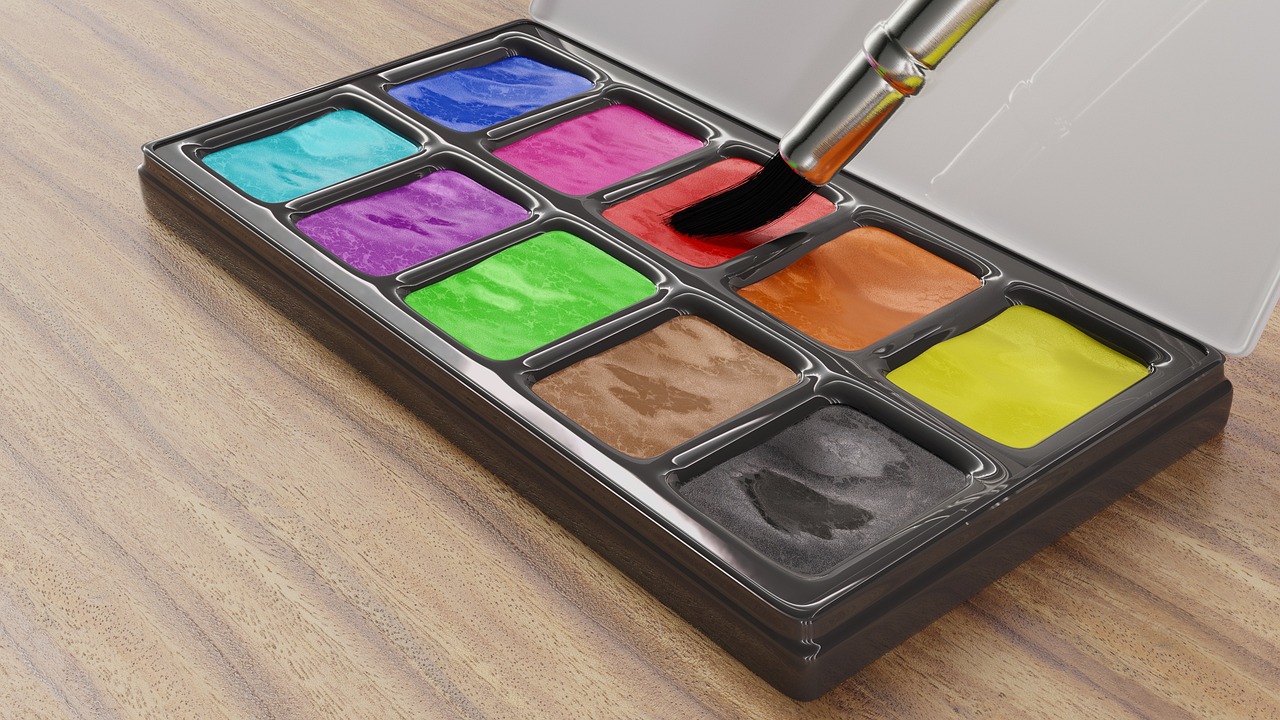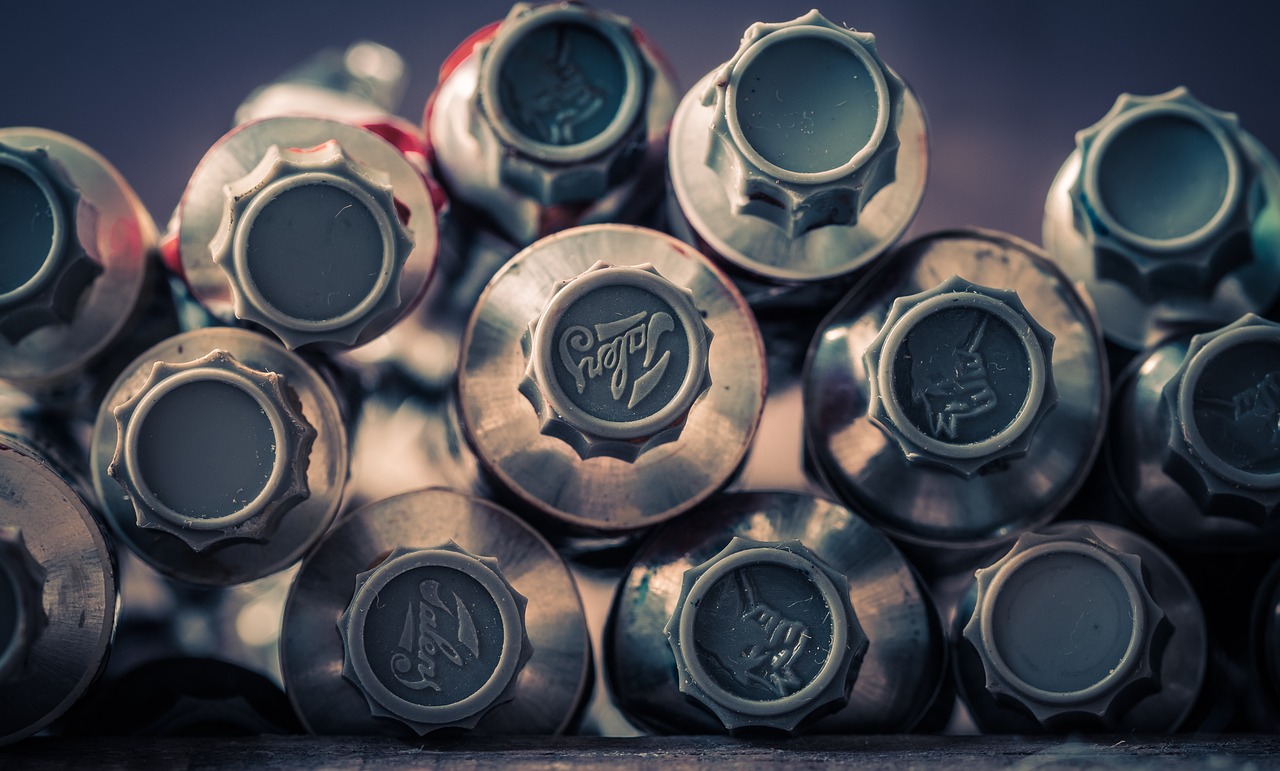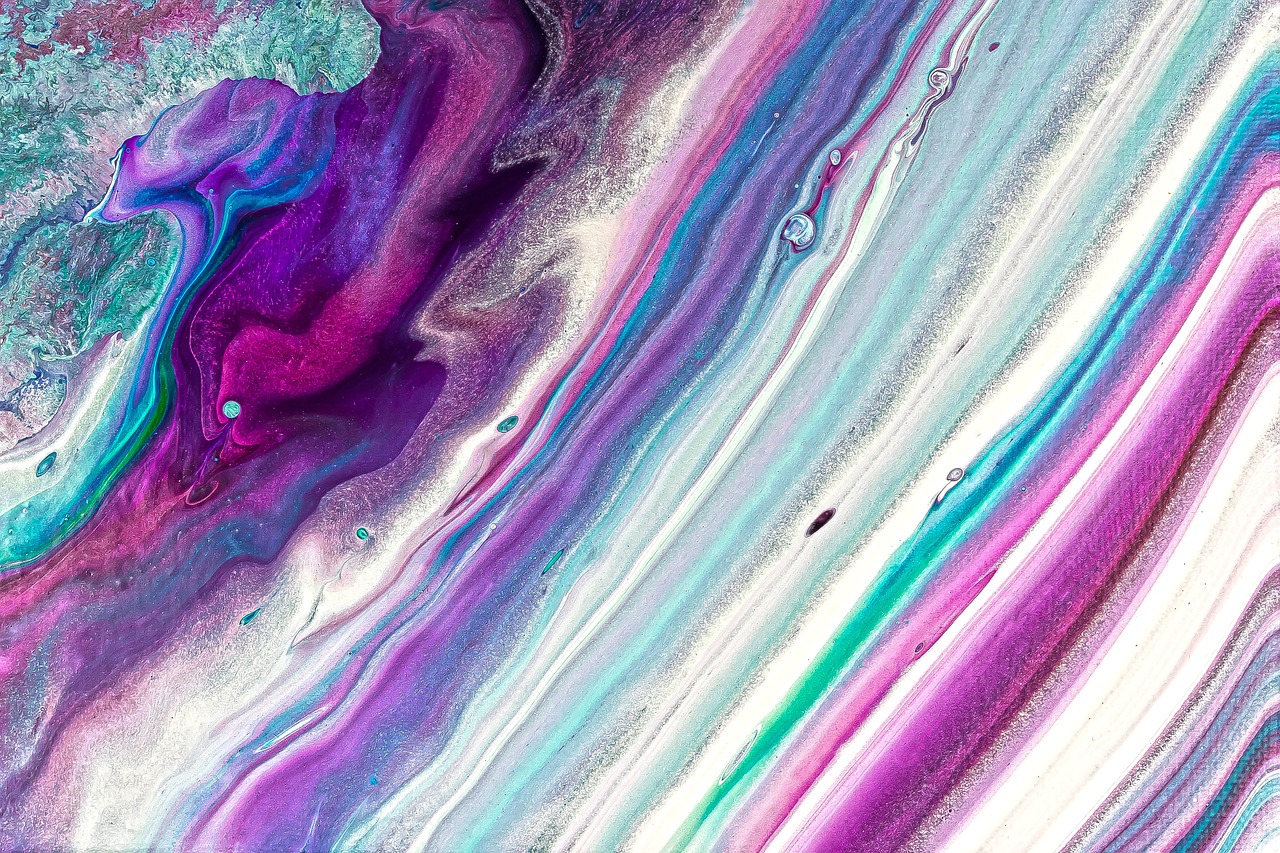The Benefits of Using Eco-friendly Paints
When it comes to enhancing our living spaces, the choice of paint plays a pivotal role not just in aesthetics but also in health and environmental impact. Eco-friendly paints are gaining popularity for a multitude of reasons, and this article explores the advantages they offer. From their environmental benefits to their health advantages and aesthetic qualities, eco-friendly paints are revolutionizing how we think about our living and working environments. Imagine a world where the colors on your walls not only inspire joy but also contribute to a healthier planet. Sounds dreamy, right? Well, with eco-friendly paints, that dream is becoming a reality!
One of the most significant advantages of using eco-friendly paints is their environmental impact. Traditional paints often contain harmful chemicals that release volatile organic compounds (VOCs) into the atmosphere, contributing to air pollution and climate change. In contrast, eco-friendly paints are formulated with natural ingredients that significantly reduce these emissions. By opting for eco-friendly options, you’re not just beautifying your home; you’re also taking a stand for sustainability. Think of it as a small change that can lead to a big impact. By choosing these paints, you help to lower your carbon footprint and promote a healthier planet for future generations.
Another compelling reason to switch to eco-friendly paints is the health benefits they offer. Traditional paints can release harmful chemicals that compromise indoor air quality, posing risks to both occupants and painters. By using eco-friendly paints, you minimize exposure to these volatile organic compounds, creating a safer environment for everyone. Imagine walking into a freshly painted room without the overwhelming smell of chemicals. Instead, you’re greeted with a subtle, pleasant aroma that doesn’t sting your eyes or throat. This is the reality with eco-friendly options.
Eco-friendly paints significantly enhance indoor air quality, which is crucial for maintaining good health. Studies have shown that homes painted with eco-friendly products exhibit lower levels of toxic emissions, leading to improved respiratory health and overall well-being. This is particularly important for vulnerable populations such as children, the elderly, and those with pre-existing health conditions. By creating a healthier indoor environment, you’re investing in the long-term health of your family.
Long-term exposure to the harmful chemicals found in traditional paints can lead to chronic health issues, including respiratory problems and skin irritations. By choosing eco-friendly options, you help mitigate these risks over time. It’s like choosing a path that leads to a healthier future instead of one filled with potential hazards. Your walls can now be a source of comfort rather than concern, allowing you to breathe easy in your own home.
For families with children and pets, safety is paramount. Eco-friendly paints are particularly safe because they are made from non-toxic materials. This means you can create a beautiful space without worrying about your loved ones being exposed to harmful chemicals. Imagine a home where your kids can play freely and your pets can roam without the risk of inhaling toxic fumes. That’s the peace of mind that eco-friendly paints bring!
Now, let’s talk about the practical side of using eco-friendly paints. The application process is straightforward, and these paints often come with impressive durability. Before painting, proper surface preparation is key to achieving the best results. Eco-friendly paints typically have a similar drying time to traditional paints, meaning you won’t have to wait long before enjoying your newly transformed space. Plus, many eco-friendly options are designed to withstand wear and tear, ensuring that your walls remain vibrant for years to come.
Who says eco-friendly paints can’t be beautiful? In fact, they come in a stunning array of colors and finishes, allowing for ample creative expression. Whether you’re aiming for a serene pastel palette or bold, vibrant hues, eco-friendly paints offer options that cater to every taste. It’s like having a canvas where you can express your personality while being kind to the planet.
Eco-friendly paints are available in a wide range of color choices, making it easy for homeowners to maintain their desired aesthetic while being environmentally conscious. You can achieve the look you want without compromising your values. Imagine a stunning living room painted in rich, earthy tones that not only looks good but also feels good to be in!
Different finish types can enhance the beauty of your spaces. Eco-friendly paints offer a variety of finishes, from matte to glossy, each with its unique characteristics. Choosing the right finish can elevate the overall look of a room, adding depth and dimension. It’s like accessorizing your outfit; the right finish can make all the difference!
- Are eco-friendly paints more expensive than traditional paints? While they can be slightly pricier, the long-term health and environmental benefits often outweigh the initial cost.
- How long does eco-friendly paint last? With proper application and maintenance, eco-friendly paints can last just as long as traditional options.
- Can I use eco-friendly paint in high-moisture areas? Yes, many eco-friendly paints are formulated to resist moisture, making them suitable for kitchens and bathrooms.

Environmental Impact
When it comes to painting our homes or offices, the choices we make can have a significant impact on the environment. Eco-friendly paints are crafted from natural ingredients, which means they're not just pretty colors on the wall; they're a step towards a healthier planet. Unlike traditional paints that often contain harmful chemicals and solvents, eco-friendly options focus on sustainability. This not only reduces harmful emissions but also promotes a cleaner, greener future. Imagine the difference it could make if every person chose to paint their space with materials that are less harmful to our planet!
One of the most striking benefits of eco-friendly paints is their ability to lower our carbon footprints. By using renewable resources and minimizing the use of toxic substances, these paints contribute to a reduction in greenhouse gases. It's like planting a tree every time you decide to paint your living room! As a result, you're not just beautifying your home; you're also doing your part in the fight against climate change.
Moreover, eco-friendly paints often come in packaging that is recyclable or made from recycled materials, further reducing waste. It's a win-win situation! You get the aesthetic upgrade you desire while also taking steps to protect the environment. But how do these paints stack up against their conventional counterparts? Let's take a look at a comparison:
| Feature | Eco-Friendly Paints | Traditional Paints |
|---|---|---|
| Ingredients | Natural and non-toxic | Chemicals and solvents |
| Emissions | Low VOCs | High VOCs |
| Environmental Impact | Minimal | Significant |
| Recyclable Packaging | Often available | Rarely available |
As you can see, the benefits of choosing eco-friendly paints extend beyond just aesthetics. They play a crucial role in protecting our environment. So, next time you're planning a painting project, consider how your choice of paint can affect not only your immediate surroundings but also the planet as a whole. It's a small change that can lead to big results.

Health Benefits
When it comes to painting your home or workspace, the health benefits of using eco-friendly paints are nothing short of remarkable. Traditional paints often contain a cocktail of volatile organic compounds (VOCs) that can be detrimental to both your health and the environment. In contrast, eco-friendly paints are formulated with natural ingredients, significantly reducing the presence of these harmful substances. This means that when you choose eco-friendly options, you're not just making a choice for the planet; you're also making a choice for your own well-being.
One of the most significant advantages of using eco-friendly paints is their ability to minimize exposure to toxic emissions. Studies have shown that VOCs can lead to various health issues, including headaches, dizziness, and even long-term respiratory problems. By opting for paints that are low in VOCs, you create a safer environment for everyone—especially for children and pets who are often more susceptible to harmful chemicals. Imagine painting a room and not having to worry about whether the air quality will make your family sick. It’s a breath of fresh air, quite literally!
Improving indoor air quality is one of the standout benefits of eco-friendly paints. Traditional paints can release harmful fumes long after the application process is complete, lingering in the air and affecting your health. In contrast, eco-friendly paints dry quickly and emit fewer toxins, leading to a healthier living environment. Research indicates that homes painted with eco-friendly options experience a noticeable improvement in air quality, which can lead to better respiratory health and overall well-being. Think of it as replacing the stale air in your home with a refreshing breeze—your lungs will thank you!
Long-term exposure to conventional paints can be a ticking time bomb for chronic health issues. The cumulative effect of inhaling VOCs can lead to serious conditions, including asthma and other respiratory diseases. Eco-friendly paints, on the other hand, help mitigate these risks over time. By choosing these safer alternatives, you're not just making a one-time decision; you're investing in the long-term health of everyone who steps foot in your home. It's like planting a seed for a healthier future, where you can breathe easy knowing that your walls are not contributing to health problems.
For families with children and pets, the choice of paint becomes even more critical. Eco-friendly paints are particularly safe because they are made from non-toxic materials. This means that when your little ones are playing on the floor or your furry friends are lounging around the house, you can rest assured that they are not at risk from harmful chemicals. It’s a comforting thought to know that your home is a safe haven, free from toxins that could potentially harm your loved ones. So, when you're selecting paint, think about it as creating a protective bubble around your family—one that keeps them safe and healthy.
In conclusion, the health benefits of using eco-friendly paints go far beyond just aesthetics. They play a crucial role in enhancing indoor air quality, reducing long-term health risks, and ensuring a safe environment for children and pets. By making the switch to eco-friendly options, you're not just beautifying your space; you're also prioritizing health and well-being for everyone who steps inside your home.
- What are VOCs and why are they harmful?
VOCs, or volatile organic compounds, are chemicals found in many traditional paints that can evaporate into the air, leading to poor indoor air quality and various health issues. - Are eco-friendly paints more expensive?
While eco-friendly paints may have a higher upfront cost, their long-term health benefits and durability can make them a more economical choice over time. - Can I achieve the same color and finish with eco-friendly paints?
Absolutely! Eco-friendly paints come in a wide range of colors and finishes, allowing you to achieve your desired aesthetic without compromising on safety.

Indoor Air Quality
When it comes to creating a healthy living environment, is often overlooked. Did you know that the air inside your home can be more polluted than the air outside? Traditional paints are notorious for releasing harmful volatile organic compounds (VOCs) into the air, which can linger long after the paint has dried. These VOCs can lead to a range of health issues, from headaches and dizziness to more severe respiratory problems. In contrast, eco-friendly paints are formulated with natural ingredients that significantly reduce these toxic emissions, making them a safer choice for both your family and the planet.
Studies have shown that using eco-friendly paints can lead to a remarkable improvement in indoor air quality. For instance, a study conducted by the Environmental Protection Agency (EPA) found that homes painted with low-VOC or zero-VOC paints exhibited a noticeable decrease in the concentration of harmful chemicals in the air. This is particularly important for individuals with asthma or allergies, as cleaner air can alleviate symptoms and improve overall well-being. Imagine breathing in fresh, clean air every time you step into your living room—it's not just a dream; it's a reality with eco-friendly options!
Furthermore, the benefits extend beyond just the immediate effects. Long-term exposure to the toxic emissions from traditional paints can lead to chronic health issues that might not be apparent until years later. By choosing eco-friendly paints, you’re not just making a choice for today; you’re investing in a healthier future. It's like planting a tree; the benefits may take time to manifest, but when they do, they provide shade and beauty for generations to come.
To illustrate the differences between traditional and eco-friendly paints, consider the following table:
| Feature | Traditional Paints | Eco-Friendly Paints |
|---|---|---|
| VOCs Emission | High | Low/None |
| Impact on Health | Negative | Positive |
| Environmental Impact | Harmful | Beneficial |
| Durability | Variable | High |
In summary, the choice of paint can dramatically affect the air quality in your home. By opting for eco-friendly paints, you not only enhance the aesthetics of your space but also contribute to a healthier living environment. It's a win-win situation that allows you to enjoy your home while safeguarding your family’s health. So, the next time you think about giving your walls a fresh coat, remember that your choice of paint is about more than just color—it's about creating a sanctuary that promotes well-being.

Long-term Health Effects
When it comes to the long-term health effects of the paints we choose, the difference between traditional paints and eco-friendly alternatives is like night and day. Traditional paints often contain a cocktail of **volatile organic compounds (VOCs)** and other harmful chemicals that can linger in your home long after the paint has dried. These compounds are notorious for contributing to a range of health issues, from headaches and dizziness to more severe chronic conditions like asthma and neurological problems. In contrast, eco-friendly paints are formulated with natural ingredients that significantly reduce or eliminate these harmful substances.
Studies have shown that long-term exposure to VOCs can lead to a decline in respiratory health, particularly in vulnerable populations such as children and the elderly. By opting for eco-friendly paints, you’re not just making a choice for aesthetics; you’re actively protecting your family’s health. Imagine living in a home where the air is as clean as the walls are beautiful—this is the reality that eco-friendly paints can help you achieve.
Moreover, the benefits of switching to eco-friendly options extend beyond immediate health concerns. Over time, the accumulation of toxins in traditional paints can lead to chronic illnesses that may require long-term medical treatment. This not only affects your quality of life but can also lead to significant healthcare costs. In contrast, using eco-friendly paints can be viewed as a **preventative measure**—a way to safeguard your health and well-being for years to come.
To illustrate the potential health impacts, consider the following table that highlights common health issues associated with traditional paints compared to eco-friendly options:
| Health Issue | Traditional Paints | Eco-friendly Paints |
|---|---|---|
| Respiratory Problems | High risk due to VOCs | Minimal risk, promotes better air quality |
| Allergic Reactions | Common due to chemical additives | Less likely, uses natural ingredients |
| Long-term Chronic Illness | Increased risk with prolonged exposure | Lower risk, safer for long-term use |
In summary, choosing eco-friendly paints is not just a trend; it's a lifestyle choice that prioritizes health, safety, and sustainability. It’s about creating a living environment that nurtures rather than harms. As we become more aware of the long-term effects of our choices, it’s clear that eco-friendly paints offer a path toward healthier homes and happier lives.
- What are VOCs and why are they harmful? VOCs are volatile organic compounds that can evaporate into the air and cause health issues such as headaches, dizziness, and respiratory problems.
- Are eco-friendly paints more expensive? While they may have a higher upfront cost, eco-friendly paints can save you money in the long run by reducing health-related expenses and enhancing indoor air quality.
- How do I know if a paint is eco-friendly? Look for certifications such as Green Seal or LEED, which indicate that the paint meets strict environmental standards.
- Can eco-friendly paints provide the same durability as traditional paints? Yes, many eco-friendly paints are designed to be just as durable and long-lasting as their conventional counterparts.

Safe for Children and Pets
When it comes to creating a safe living environment, particularly in homes with children and pets, the choice of paint can make a world of difference. Eco-friendly paints are formulated with non-toxic ingredients, which means they contain no harmful chemicals that can pose risks to the health of your loved ones. Traditional paints often release volatile organic compounds (VOCs) that can linger in the air long after application, potentially leading to respiratory issues and other health concerns. In contrast, eco-friendly options significantly reduce these risks, making them an ideal choice for families.
Imagine your little ones playing on the floor or your furry friends curling up next to freshly painted walls. With eco-friendly paints, you can breathe easy knowing that the air they’re inhaling is free from toxic fumes. This is especially important during the drying and curing processes, where traditional paints can emit harmful vapors. Eco-friendly paints, on the other hand, dry quickly and safely, allowing your home to return to normalcy without the worry of lingering toxins.
Moreover, many eco-friendly paints are also certified by reputable organizations that ensure their safety and sustainability. For example, look for labels such as Green Seal or LEED certification, which indicate that the product meets strict environmental and health standards. This not only gives you peace of mind but also helps you make informed decisions when choosing paints for your home.
Additionally, when selecting eco-friendly paints, you’ll find a variety of options that are not only safe but also durable and aesthetically pleasing. They come in an array of colors and finishes, allowing you to create a beautiful space without sacrificing safety. So, whether you're painting a nursery, a playroom, or an area where your pets roam freely, you can rest assured that you’re making a responsible choice.
In summary, choosing eco-friendly paints is a proactive step towards ensuring a healthier home environment. By opting for these safe alternatives, you’re not only protecting your children and pets but also contributing to a more sustainable world. It’s a win-win situation that allows you to express your creativity while prioritizing health and safety.
- What are eco-friendly paints made of? Eco-friendly paints are typically made from natural ingredients such as plant-based oils, resins, and pigments, which reduce harmful emissions.
- Are eco-friendly paints more expensive than traditional paints? While they can be slightly pricier, the long-term health benefits and environmental impact often justify the cost.
- How long does it take for eco-friendly paint to dry? Most eco-friendly paints dry quickly, often within a few hours, but it’s best to check the specific product instructions.
- Can I use eco-friendly paint outdoors? Yes, many eco-friendly paints are suitable for outdoor use, but make sure to select a product specifically designed for exterior applications.

Application and Performance
When it comes to eco-friendly paints, understanding their application and performance is crucial for both DIY enthusiasts and professional painters. The process of applying these paints can be a bit different from traditional options, but the benefits are well worth it. First off, preparation is key. Just like a chef preps their ingredients before cooking, you need to prepare the surfaces properly. This involves cleaning, sanding, and priming if necessary. The good news is that many eco-friendly paints come in ready-to-use formulas, which can save you time and hassle.
One of the standout features of eco-friendly paints is their drying time. Unlike conventional paints that can take ages to dry and emit strong odors, eco-friendly options often dry faster and with less fuss. Imagine painting a room and being able to enjoy it without waiting for the smell to dissipate! Typically, these paints dry to the touch within a couple of hours, though it’s always wise to check the specific product guidelines. This means you can get back to enjoying your space sooner rather than later.
Durability is another significant factor when considering eco-friendly paints. Many people worry that because these paints are made from natural ingredients, they might not hold up as well as their chemical-laden counterparts. However, this is a common misconception. Eco-friendly paints are designed to withstand the test of time and environmental factors. They are often resistant to fading, peeling, and chipping, making them an excellent long-term investment for your home. Just like choosing a sturdy pair of shoes, opting for high-quality eco-friendly paint ensures that your walls will look great for years to come.
To give you a clearer picture of the differences, here's a quick comparison of traditional vs. eco-friendly paints:
| Feature | Traditional Paints | Eco-friendly Paints |
|---|---|---|
| Drying Time | Longer, with strong odors | Faster, low odor |
| VOCs | High levels | Minimal to none |
| Durability | Can peel and fade | Highly durable and resistant |
| Environmental Impact | Harmful to the environment | Eco-friendly and sustainable |
In summary, the application and performance of eco-friendly paints are not only user-friendly but also promote a healthier environment. So, if you’re contemplating a painting project, consider going green! Your walls will not only look fantastic, but you’ll also be contributing to a healthier planet.
- Are eco-friendly paints as durable as traditional paints?
Yes, many eco-friendly paints are designed to be highly durable and resistant to wear and tear. - How long does it take for eco-friendly paint to dry?
Typically, eco-friendly paints dry to the touch within a few hours, but it's best to consult the specific product instructions. - Do eco-friendly paints have a strong smell?
No, one of the advantages of eco-friendly paints is that they have minimal to no odor compared to traditional paints.

Aesthetic Qualities
When it comes to transforming your living space, the aesthetic qualities of eco-friendly paints are truly remarkable. These paints not only contribute to a healthier environment but also offer a plethora of options that allow homeowners to express their unique style. Imagine walking into a room that feels vibrant and alive, all while knowing that the colors on your walls are safe for your family and the planet. With eco-friendly paints, you can achieve that perfect balance between beauty and sustainability.
One of the most exciting aspects of eco-friendly paints is the extensive range of color options available. Unlike traditional paints that may contain harmful chemicals, eco-friendly alternatives are formulated with natural pigments that provide rich and vibrant hues. From deep, calming blues to bright, energizing yellows, the choices are endless. Homeowners can easily find shades that complement their decor while maintaining an environmentally conscious approach. This variety ensures that, no matter your style—be it modern, rustic, or eclectic—you can find the perfect color to match your vision.
Moreover, the finish types offered by eco-friendly paints are diverse and cater to various aesthetic preferences. Whether you prefer a matte, satin, or glossy finish, eco-friendly options deliver stunning results without compromising on quality. Each finish type has its unique characteristics:
| Finish Type | Description | Best For |
|---|---|---|
| Matte | Soft, non-reflective finish that hides imperfections. | Ceilings and low-traffic areas. |
| Satin | Subtle sheen that is easy to clean and durable. | Living rooms and bedrooms. |
| Glossy | High-shine finish that reflects light and is very durable. | Kitchens and bathrooms. |
Additionally, the application of eco-friendly paints can enhance the overall beauty of your spaces. They typically adhere well to surfaces, providing a smooth and even finish that elevates the aesthetic appeal of any room. The drying time is often comparable to traditional paints, meaning you won't have to wait long to enjoy your freshly painted walls. Plus, the durability of these paints ensures that your chosen colors remain vibrant for years to come, resisting fading and wear.
In conclusion, the aesthetic qualities of eco-friendly paints are a significant advantage for anyone looking to revamp their home. With a wide variety of colors and finishes available, these paints not only beautify your space but also align with a sustainable lifestyle. So, why settle for ordinary when you can have extraordinary? Choose eco-friendly paints and let your home reflect your values and style.
- What are eco-friendly paints made of?
Eco-friendly paints are typically made from natural ingredients such as plant oils, resins, and pigments, which reduce harmful emissions. - Are eco-friendly paints more expensive than traditional paints?
While they may have a higher upfront cost, the long-term benefits, such as improved health and durability, often outweigh the initial investment. - How do I know if a paint is eco-friendly?
Look for certifications such as Green Seal or the EPA’s Safer Choice label, which indicate that the paint meets strict environmental standards.

Color Options
When it comes to choosing the right paint for your home, the color options available in eco-friendly paints are simply astounding. You might be surprised to learn that these paints offer a vast spectrum of colors that can suit any style or preference. Whether you're aiming for a calming blue to create a serene bedroom retreat or a vibrant yellow to energize your living space, eco-friendly options have you covered. The beauty of these paints is that they not only allow for creative expression but also align with your values of sustainability and health.
One of the most appealing aspects of eco-friendly paints is their ability to mimic traditional paints without compromising on quality or aesthetics. In fact, many manufacturers have developed advanced formulations that provide rich pigments and excellent coverage. This means you can achieve that beautiful finish you desire without the guilt of using harmful chemicals. You might ask, "Are these colors as vibrant as conventional paints?" Absolutely! Many eco-friendly brands offer hues that are just as bold, if not bolder, than their non-eco counterparts.
Moreover, the availability of color options in eco-friendly paints is not just about aesthetics; it's also about the environmental impact. Many of these paints are made from natural pigments derived from minerals, plants, and other organic materials. This not only reduces the reliance on synthetic dyes but also contributes to a lower carbon footprint. So, while you're choosing that perfect shade of green for your accent wall, you're also making a choice that benefits the planet.
For those who are particularly picky about their color choices, eco-friendly paints often come in various finishes, such as matte, satin, and gloss, adding another layer of customization. Whether you prefer a sleek, shiny look or a soft, muted finish, you'll find a plethora of options that meet your aesthetic desires. This versatility allows homeowners and designers alike to create spaces that reflect their unique personalities while being mindful of their environmental footprint.
In summary, the color options in eco-friendly paints are not only extensive but also vibrant and high-quality. With the ability to choose from a wide palette and various finishes, you can create stunning interiors that are both beautiful and sustainable. So, the next time you’re planning a home makeover, consider going green with your color choices—your walls will thank you, and so will the planet!
- Are eco-friendly paints more expensive than traditional paints?
While they can be slightly pricier upfront, the long-term benefits often outweigh the initial costs, especially considering their durability and health advantages.
- How do eco-friendly paints perform compared to traditional paints?
Eco-friendly paints have improved significantly in recent years, offering comparable durability, coverage, and finish to traditional paints.
- Can I find eco-friendly paint in any color?
Yes! Eco-friendly paints come in a wide range of colors and finishes, allowing you to find the perfect shade for your home.
- Are eco-friendly paints safe for children and pets?
Absolutely! Eco-friendly paints are typically non-toxic and free from harmful chemicals, making them a safe choice for households with children and pets.

Finish Types
When it comes to selecting eco-friendly paints, one of the most exciting aspects is the variety of available. These finishes not only enhance the aesthetic appeal of your space but also cater to different functional needs. Whether you're aiming for a sleek modern look or a cozy rustic vibe, eco-friendly paints have got you covered. Let's explore some popular finish types and what makes them special.
First up, we have the matte finish. This type is perfect for those who want to create a soft, subtle look without any shine. Matte finishes absorb light, which can help hide imperfections on walls, making it an excellent choice for older homes or spaces that need a little TLC. However, it’s worth noting that matte finishes can be less durable and more challenging to clean compared to their glossier counterparts.
Next, we have the eggshell finish, which strikes a beautiful balance between matte and gloss. It has a slight sheen that adds depth to colors while still being relatively easy to clean. This makes it a popular choice for living rooms and bedrooms, where you want a touch of elegance without the high maintenance of a glossy finish. It's like wearing a nice shirt—smart but comfortable.
Then there's the satin finish, which offers a more pronounced sheen, making it great for high-traffic areas like hallways and kitchens. Its durability means it can withstand the wear and tear of daily life while still looking chic. Imagine a satin finish as the versatile friend who can dress up for a party but is also comfortable lounging at home.
For those seeking a more reflective look, the semi-gloss finish is a fantastic option. It’s often used for trim, moldings, and cabinetry, as it highlights architectural details beautifully. Not only does it provide a polished appearance, but it also offers excellent resistance to moisture, making it ideal for bathrooms and kitchens. Think of it as the shiny new car that turns heads while being practical for everyday use.
Finally, we have the high-gloss finish, which is all about making a statement. This finish is incredibly reflective and can create a dramatic effect in any space. It's often used in modern designs to add a touch of glamour and sophistication. However, it’s essential to prepare the surface well, as high-gloss finishes can reveal imperfections like a spotlight on a stage. They are perfect for accent walls or furniture pieces that you want to stand out.
In summary, the finish type you choose can significantly impact the overall look and feel of your space. Each finish brings its unique charm and functionality, allowing you to express your style while being environmentally conscious. So, whether you prefer the understated elegance of a matte finish or the bold statement of high gloss, eco-friendly paints offer a range of options that cater to your aesthetic needs.
- Are eco-friendly paints as durable as traditional paints?
Yes, many eco-friendly paints are designed to be just as durable, if not more so, than traditional paints. They often have excellent adhesion and resistance to wear. - Can I find eco-friendly paints in a variety of colors?
Absolutely! Eco-friendly paints come in a wide range of colors and finishes, allowing for creative expression. - Are eco-friendly paints safe for children's rooms?
Yes, eco-friendly paints are typically non-toxic and safe for use in children's spaces, making them a great choice for family homes. - How do I apply eco-friendly paints?
Application is similar to traditional paints, but it's essential to follow the manufacturer's guidelines for the best results, including preparation and drying times.
Frequently Asked Questions
- What are eco-friendly paints made of?
Eco-friendly paints are typically made from natural ingredients such as plant-based oils, resins, and pigments. These materials minimize harmful emissions and promote a healthier environment both indoors and outdoors.
- How do eco-friendly paints improve indoor air quality?
These paints contain low or no volatile organic compounds (VOCs), which are harmful chemicals that can degrade indoor air quality. By using eco-friendly paints, you reduce toxic emissions, leading to a fresher and healthier living space.
- Are eco-friendly paints safe for children and pets?
Absolutely! Eco-friendly paints are formulated to be non-toxic, making them a safe choice for homes with children and pets. This means you can enjoy a beautifully painted home without worrying about harmful chemicals.
- How do eco-friendly paints compare to traditional paints in terms of durability?
While some people may think eco-friendly paints are less durable, many modern formulations are designed to be just as tough and long-lasting as traditional paints. They often provide excellent coverage and resistance to wear and tear.
- Can I achieve a variety of colors with eco-friendly paints?
Yes! Eco-friendly paints come in a wide range of colors and finishes. This allows you to express your creativity and maintain your desired aesthetic while being environmentally conscious.
- What is the drying time for eco-friendly paints?
The drying time for eco-friendly paints can vary depending on the specific product and environmental conditions, but they generally dry at a similar rate to traditional paints. Always check the manufacturer's guidelines for the best results.
- Are there any specific brands of eco-friendly paints you recommend?
While there are many reputable brands, it's best to look for those that are certified by organizations like Green Seal or the EPA's Safer Choice program. These certifications ensure that the paints meet strict environmental and health standards.
- What are some long-term health effects of using traditional paints?
Long-term exposure to traditional paints, especially those high in VOCs, can lead to chronic health issues such as respiratory problems, headaches, and even neurological effects. Switching to eco-friendly options can help mitigate these risks.



















